কলকাতা মানে ভারত তথা পৃথিবীর ইতিহাসে অনেক কিছু – একই সঙ্গে উপনিবেশিক বৃটিশ ভারতের একদা রাজধানী এবং “জুয়েল ইন দ্য ক্রাউন”, সম্ভবত ব্রিটিশ ভারতে প্রথম আধুনিক শিক্ষার কলেজ বর্তমান প্রেসিডেন্সি ইউনিভার্সিটির জন্মস্থান, ভারতের প্রথম সুপ্রিম কোর্ট, এশিয়াটিক সোসাইটি এবং ক্যালকাটা মেডিক্যাল কলেজের (১৮৩৫, এশিয়ার প্রথম আধুনিক মেডিসিন শিক্ষার প্রতিষ্ঠান) আঁতুড় ঘর। এবং আরও অনেক কিছুই এখানে প্রথম হয়েছিল।
এ এক সুবিশাল এবং বিস্তীর্ণ ইতিহাস। কিন্তু ইংরেজের বাণিজ্যের এবং ক্ষমতার বৃদ্ধির সাথে জড়িয়ে আছে কয়েকজন ব্রিটিশ ডাক্তারের কাহিনী। আমি কলকাতার গড়ে ওঠার এবং প্রথম যুগের ইতিহাসের কিছু টুকরো টুকরো অংশ নিয়ে আলোচনা করব।
(অষ্টাদশ শতাব্দীর কলকাতার চিত্র। শিল্পী অজানা।)
(১৭৮৮ সালের কলকাতার চিত্র। সৌঃ ব্রিটিশ মিজিয়াম)
ব্রিটিশ মেডিক্যাল জার্নাল-এ (মে ২৫, ১৯০৭) একটি দীর্ঘ প্রবন্ধ প্রকাশিত হয় “British Medicine in India” শিরোনামে (লেখক অজ্ঞাত)। সে প্রবন্ধের একটি অংশের শীর্ষনাম ছিল – “Medical Empire Builders”। নামেই অনুমেয় ব্রিটিশ সাম্রাজ্যের ভিত গড়ে তুলতে ডাক্তারদের ভূমিকা নিয়ে আলোচনা হবে। একেবারে গোড়ার যুগে গুরত্বপূর্ণ দুজনের নাম হল গ্যাব্রিয়েল বাউটন (Gabriel Boughton) এবং উইলিয়াম হ্যামিলটন (William Hamilton)।
গ্যাব্রিয়েল বাউটনের মিথ
গ্যাব্রিয়েল বাউটন নিয়ে চালু অতিকথা হল যে দিল্লীর মসনদের সম্রাট শাহজাহানের কন্যার (ভিন্ন মতে স্বয়ং শাহজাহানের) শরীর বাজে ভাবে পুড়ে যায়। বাউটন চিকিৎসা করে পুড়ে যাওয়া মানুষটিকে সুস্থ করে তোলেন। ২ খণ্ডে A History of Indian Medical Service: 1600-1913-এর মতো গ্রন্থের লেখক ডি জি ক্রফোর্ড বলছেন – “One of the most widely known stories of the early history of the English in India is the legend of Gabriel Boughton, Surgeon of the Hopewell ; how he was sent for to attend the daughter of the Emperor Shah Jahan, who had been badly burned; how he was successful in effecting a cure ; and how, when desired to name his own reward, he asked for and obtained liberty for his masters, the Company, to trade in Bengal, after which the first settlement of the East India Company in Bengal was founded.” অর্থাৎ, বাউটনের চিকিৎসার ফলশ্রুতিতে দিল্লীর সম্রাট খুশি হয়ে ভারতে ইংরেজদের পত্তনি গড়ার অনুমতি দেন, যা পরে প্রায় ২০০ বছর ব্যাপী ব্রিটিশ উপনিবেশ হিসেবে শাসিত হবে।
সমস্যা হচ্ছে, সম্রাট শাহজাহানের কন্যার চিকিৎসা এবং সুস্থ হয়ে ওঠা নিয়ে বহুলসংখ্যক পরস্পর বিরোধী মতামত পাওয়া যায়। এর মধ্যে একটি উল্লেখযোগ্য মত হল ইতালীয় পর্যটক নিকোলাও মানুচির বিবরণ। মানুচি সেসময় ভারতে ছিলেন (১৬৫৫/৫৬ থেকে ১৭১৭ সাল পর্যন্ত)। তিনি এ ঘটনা সম্পর্কে লিখেছেন – “This Princess treated herself to many entertainments, such as music, dancing, and other pastimes. It happened one night while engaged in such-like dances that the thin raiment, steeped Princess’s favourite dancing woman caught fire, and she bore to her, the Princess came to her aid, and thus was burnt herself on the chest.” (Nicolao Manucci, Storia do Mogor, or Mogul India, 1653-1708, Vol. I, পৃঃ ২১৯) মানুচি শাহজাহানের কন্যা জাহানারার পুড়ে যাবার ব্যাপারে বলছেন, কিন্তু বাউটনের চিকিৎসা সম্পর্কে কোন মন্তব্য করেন নি।
(বাঁ দিকে বাউটনের প্রতিকৃতি। শিল্পী এবং উৎস অজানা। ডান পাশে জাহানারা বেগমের মুঘল মিনিয়েচার পেইন্টিং)
ডোনাল্ড ম্যাকডোনাল্ড তাঁর Surgeons Twoe and A Barber (1950) গ্রন্থে জানাচ্ছেন – “হিজরা ১০৪৬-এ (১৬৩৬ খ্রিস্টাব্দ) শাহজাহানের কন্যা ভয়াবহভাবে পুড়ে যাবার পরে আসাদ খানের পরামর্শে একজন দূতকে সুরাটে পাঠানো হয় ইউরোপীয় সার্জনের সাহায্য প্রার্থনা করে। হোপওয়েল জাহাজের সার্জেন গ্যাব্রিয়েল বাউটন তখন দাক্ষিণাত্যে সম্রাটের ঘাঁটিতে আসেন এবং রাজকন্যাকে চিকিৎসা করে সুস্থ করে তোলেন। এর ফলে রাজ দরবারে বাউটনের প্রতপত্তির বিপুল বৃদ্ধি ঘটে। কিন্তু তিনি নিজের জন্য কোন কিছু যাঞ্চা করেন নি, ‘but solicited that his nation might have liberty to trade, free of all duties, to Bengal, and to establish factories in that country.’ তাঁর অনুরোধ রক্ষা করা হয় এবং বিনা শুল্কে বাণিজ্যের জন্য এবং দুর্গ গড়ার জন্য সম্রাটের ‘ফরমান’ পাওয়া যায়।” (পৃঃ ৩০-৩১)
কিন্তু পূর্বোল্লিখিত উচ্চ পদস্থ সামরিক কর্তা এবং সুনিপুণ ঐতিহাসিক ডি জি ক্রফোর্ড সমস্ত রকমের ঐতিহাসিক সাক্ষ্যপ্রমাণ বিচার করে এই সিদ্ধান্তে উপনীত হন যে বাউটন নন, ব্রিজম্যান নামে এক ইংরেজ শাহ সুজার কাছ থেকে ‘ফরমান’ আদায় করতে সক্ষম হন এবং এ ঘটনা ঘটে ১৬৫১/৫২ সালে। যদিও পরে ফরমানটি খোয়া যায়। (A History of Indian Medical Service: 1600-1913, ভল্যুম ১, পৃঃ ৫৩) এর সঙ্গে বাউটনের নামে বহুল প্রচারিত সময়ের বিস্তর ফারাক আছে।
আবার আরেকটি ঐতিহাসিক প্রমাণ অনুযায়ী, বাউটন যে সত্যিই ফরমান পেয়েছিলেন সে সম্পর্কে ক্রফোর্ড বলছেন – “That Boughton did really obtain a farman in favour of the Company from Shah Shuja seems to be proved by the following extract from the Court Book of 1674, Vol. XXIX., dated 4th Sept.
in that year. The passage is quoted by Sir R. Temple, at p. 234 of his edition of Bowrey’s Geographical Account of-Countries round the Bay of Bengal.” (প্রাগুক্ত, পৃঃ ৫৩)
ক্রফোর্ডের সর্বশেষ সিদ্ধান্ত হল – “সম্রাট শাহজাহানের কন্যা যখন দুর্ঘটনাক্রমে আগুনে পুড়ে যান তখন তাঁকে সারিয়ে তোলার ব্যাপারে বাউটনকে নিয়ে যে কিংবদন্তি আছে তার কোন বাস্তব ভিত্তি নেই। সে সময়ে এমন কোন কর্তাব্যক্তির সাক্ষ্য পাওয়া যায় না যাতে বোঝা যায় যে তিনি সম্রাটের কাছ থেকে কোম্পানির সুবিধার্থে একটি ফরমান আদায়ে সফল হয়েছিলেন। কিন্তু এটা নিশ্চিত যে গ্যাব্রিয়েল বাউটনের বাস্তবে অস্তিত্ব ছিল, তিনি হোপওয়েল জাহাজের সার্জেনও ছিলেন।” (প্রাগুক্ত, পৃঃ ৫৬)
ক্রফোর্ড আরও বলছেন – “গ্যাব্রিয়েল বাউটনের মৃত্যুর দিন এবং স্থান অজানা। তাঁর কোন স্মৃতি ফলক খুঁজে পাওয়া যায়না। তাঁর স্মৃতিতে কোন স্মরণিকাও পাওয়া যায়না। Dictionary of National Biography-তে তাঁর কোন উল্লেখ নেই। কিন্তু ইতিহাস থেকে জানা যায় যে তিনি কোম্পানির এবং দেশের হয়ে কাজ করেছেন।” (প্রাগুক্ত, পৃঃ ৬০)
উইলিয়াম হ্যামিল্টনের কাহিনী
অ্যাডভেঞ্চার-প্রিয় উইলিয়াম হ্যামিল্টন ১৭০৯ সালে গ্লাসগো ইউনিভার্সিটি থেকে পড়াশুনো করে ইস্ট ইন্ডিয়া কোম্পানির চাকরিতে যোগ দেন। এখানে মনে রাখা দরকার, স্বদেশে অর্থাৎ ইংল্যান্ডে সার্জেনদের সামাজি, রাজনৈতিক এবং অর্থনৈতিক অবস্থান একেবারেই সুবিধের ছিল না – কিছু ব্যতিক্রম বাদ দিলে। এজন্য পাশ করা ডাক্তারদের একটি উল্লেখযোগ্য অংশ ইস্ট ইন্ডিয়া কোম্পানির বাঁধা চাকরিতে যোগ দিতেন। এছাড়া প্রাচ্যের তথা ভারতের বিপুল সম্পদ সম্পর্কে লোভ তো ছিলই – যতটুকু কামানো যায় এদেশ তথা ভারত থেকে।
যাহোক, তিনি Sherborne জাহাজে করে ভারতে পাড়ি জমান। কিন্তু জাহাজের ক্যাপ্টেনের দুর্ব্যবহারের জন্য তামিলনাড়ুর কাছে কাড্ডালোরে নৌকো করে পালিয়ে মাদ্রাজ চলে যান। সেখান থেকে কোম্পানির হুকুম উপেক্ষা করে কলকাতায় এসে পৌঁছন। পরবর্তীতে হ্যামিল্টন সম্পর্কে জানা যায় – “when an important embassy went from Calcutta to the Emperor, Farekh Siyar, in 1714, it was the skilful treatment of the Emperor by the Company’s Surgeon, William Hamilton, a cadet of the family of Hamilton of Dalziel, that eventually obtained important concessions upon which the subsequent prosperity of the Company largely depended.” (Donald McDonald, “The Indian Medical Service. A Short Account of its Achievements 1600 — 1947”, Journal of the Royal Society of Medicine, January 1, 1956, pp. 13-17, পৃঃ ১৪)
সম্রাটের কুঁচকির ফোঁড়া সার্জেন হ্যামিল্টন সারিয়ে তোলেন। ৭ ডিসেম্বর, ১৭১৫ সালের বিবরণ থেকে জানা যায় – “We write your Honours the welcome news of the King’s recovery. As a clear demonstration to the world he washed himself on the 23rd ultimo, and accordingly received the congratulations of the whole Court. As a reward for Mr. Hamilton’s care and success, the King was pleased on the 30th to give him in public, viz., a vest, a culgee (এক বিশেষ ধরণের পাগড়ি) set with precious stones, two diamond rings, an elephant horse, and 6,000 rupees; besides ordering at the same time all his small instruments to be made in gold, with gold buttons for his coat and waistcoat, and brushes set with jewels.” হীরে, মুক্তো-মাণিক্য খচিত পাগড়ি, সোনার তৈরি সার্জারির যন্ত্রপাতি, কোটের সোনার বোতাম, দাঁতের ব্রাশ রত্নখচিত, এবং কোমরবন্ধের সোনার বোতাম – সবমিলিয়ে হ্যামিল্টনের প্রাপ্তি ভালোই ছিল বলতে হবে।
যাহোক, ফারুখ সায়ারের দরবারে ব্রিটিশ দৌত্য যথেষ্ট সফল হয়েছিল। হ্যামিল্টনের সার্জারি এবং চিকিৎসার গুণে সম্রাটের যন্ত্রণা মুক্তি ঘটে। ব্রিটিশের লাভ হয় বাংলা এবং সংলগ্ন অঞ্চলে শুল্কহীন এবং নিরুপদ্রব বাণিজ্য করার অবাধ অনুমতি তথা ফরমান।
৪ ডিসেম্বর, ১৭১৭ সালে উইলিয়াম হ্যামিল্টনের মৃত্যু হয়। J. Talboys Wheeler মন্তব্য করছেন – “The English mission to Delhi, and story of Hamilton’s success in curing the great Moghul, were long remembered in Calcutta.” (J. Talboys Wheeler, Early Records of British India: A History of the British Settlements in India, 1878, পৃঃ ১৮৪)
হ্যামিল্টনের সমাধিফলকে যা উৎকীর্ণ ছিল (এখন অনেকটাই আর পড়া সম্ভব নয়) সেটা এরকম –
“William Hamilton, Surgeon,
Who departed this life the 4th December, 1717.
His memory ought to be dear to his
Nation for the credit he gain’d the English
in curing Ferrukseer, the present
King of Indostan, of a
Malignant Distemper, by which he
made his own Name famous at the
Court of that Great Monarch;
and without doubt will perpetuate
his memory, as well in Great Britain
as all other Nations of Europe.” (Eyre Chatterton, A History of the Church of England in India Since the Early Days of the East India Company, 1923, Chapter IV. Calcutta, 1690-1756, পৃঃ ৫৭))
(উইলিয়াম হ্যামিল্টনের সমাধি ফলকঃ ওপরে ইংরেজিতে এবং নীচে ফার্সিতে লেখা – সেন্ট জনস চার্চ)
ফার্সিতে লেখা অংশে কিছু অতিরিক্ত কথা আছে – “having obtained permission from the Court which is the refuge of the universe”। (Wheeler, প্রাগুক্ত, পৃঃ ১৮৫)
উইলিয়াম হ্যামিল্টনের মৃত্যুর সমসাময়িক কালে আলেক্সান্ডার হ্যামিল্টন নামে আরেকজন ব্রিটিশ পর্যটক কলকাতায় এসেছিলেন। তিনি সে সময়ের কলকাতা সম্পর্কে মন্তব্য করেছিলেন – “In Calcutta all religions are freely tolerated, but the Presbyterian: and that they brow-beat. The Pagans carry their idols in procession through the town. The Roman Catholics have their Church to lodge their idols in, and the Mahomedan is not discountenanced; but there are no polemics except between our High Church men and our Low, or between the Governor’s party and other private merchants on points of trade.” (Eyre Chatterton, প্রাগুক্ত, পৃঃ ৭২)
অষ্টাদশ শতকের গোড়ার দিকে কলকাতায় সমস্ত ধর্মের মুক্ত সহাবস্থান তাঁকে বিশেষ করে প্রভাবিত করেছিল বোঝা যায়।
অষ্টাদশ শতকের শুরুতে কলকাতার চিকিৎসার আংশিক চিত্র
এই আলেক্সান্ডার হ্যামিল্টন সাহেবই সেসময়ে (১৭০৮ সাল নাগাদ) কলকাতার হাসপাতাল নিয়ে এক কৌতুককর মন্তব্য করেন – “The Company has a pretty good Hospital at Calcutta, where many go in to undergo the Penance of Physick, but few come out to give Account of its Operation.” অর্থাৎ, ইস্ট ইন্ডিয়া কোম্পানির একটি যথেষ্ট চমৎকার হাসপাতাল রয়েছে। সেখানে বহু মানুষই রোগের চিকিৎসার জন্য যায়, কিন্তু খুব স্বল্প সংখ্যকই ফিরে আসে হাসপাতালের ভেতরের খবর দেবার জন্য। (আলেক্সান্ডার হ্যামিল্টন, A New Account of the East Indies, Being the Observations and Remarks, Vol. II, ১৭২৭, পৃঃ ১১) বিবেচনার দায়িত্ব পাঠকের।
১৭৬৭ সালে “মেডিসিনস, প্রাইস অ্যান্ড ক্লাস” শিরোনামে একটি ছোট সংবাদ থেকে জানা যাচ্ছে – “it is considered that near five thousand Europeans partake yearly of the Hon’ble Company’s medicine, besides sepoys and other black people in their service; and when you observe the large advanced price that is given for medicines from private persons, which necessity often obliges us to purchase.” (Revd. J. Long, Selections from Unpublished Records of Government for the Year 1748 to 1767…, Vol. 1, 1869, পৃঃ ৫১৪)
প্রায় ৫০০০ ইউরোপীয় এবং ভারতীয়র জন্য মেডিসিনের প্রয়োজন পড়ছে। ইস্ট ইন্ডিয়া কোম্পানির তরফ থেকে যথেষ্ট সরবরাহ না থাকার ফলে বেশি দামে প্রাইভেট সরবরাহকারিদের কাছ থেকে কিনতে হচ্ছিল।
আরেকটি খবরের শিরোনাম “Medicine for Jagat Set” (৪৯৪ নম্বর এন্ট্রি)। আমরা প্রায় সবাই জগত শেঠের কথা জানি – পলাশির যুদ্ধে ইংরেজের বন্ধু হিসেবে সিরাজ-উদ-দৌলার বিরুদ্ধে ষড়যন্ত্রকারী হিসেবে। কোন কোন ঐতিহাসিকের মতে সেসময়ের বিশ্বের সবচেয়ে বড়ো ব্যাংকার বললে অত্যুক্তি হবেনা।
যাহোক, এ সংবাদে (১৭৬৭) বলা হচ্ছে যে জগত শেঠের জন্য যে যে মেডিসিনগুলো পাঠানো হয়েছে সেগুলো হল – (১) তেল (সম্ভবত তিসির তেল), (২) পশুর শিংয়ের নির্যাস (“extract of horn”), এবং (৩) অন্যান্য মেডিসিন, যেগুলোর নাম উল্লেখ করা হয়নি। (Selections from Unpublished Records of Government, প্রাগুক্ত, পৃঃ ২৩৪)
এরপরে ৪৯৫ নম্বর এন্ট্রিতে সংবাদ হচ্ছে “A Doctor wanted to apply medicine to Jagat Set” (প্রাগুক্ত, পৃঃ ৪৯৪-৪৯৫)। ১৭৬০ সালের সেপ্টেম্বর মাসে জগত শেঠ তাঁর চিঠিতে লিখছেন – “২০ তারিখ, শনিবার, সকাল ৬টার সময় আমি সমতল ভূমিতে পা হড়কে পড়ে যাই এবং এর ফলে আমার কাঁধের জয়েন্ট সরে যায় (disjointed)। ২ ঘন্টা আমার কোন জ্ঞান ছিলনা … এরপরে আমাকে মেডিসিন দেওয়া হলেও আমার হাত ব্যবহার করতে পারছিনা … but your favour I have received the use of it again, and I beg you will enquire and send me what other medicines may be necessary to remove the pain, and write me concerning the application, and also send a Doctor that perfectly under stands the nature of the medicines. By your complying with these requests, after my recovery, as long as I have life I shall retain a grateful sense of it.” (প্রাগুক্ত, পৃঃ ৪৯৫)
সহজ কথা হল, উইলিয়াম হ্যামিল্টন সার্জারি করে ফারুখ সায়ারের কুঁচকির ফোঁড়া সারিয়ে তুললেও মেডিসিনের জগতে ব্রিটিশদের অবস্থা যথেষ্ট শোচনীয় অবস্থায় ছিল। সেজন্য চিকিৎসার ক্ষেত্রে পশুর শিংয়ের নির্যাস অব্দি মেডিসিন হিসেবে ব্যবহার করা হত। এই পরিপ্রেক্ষিতে ঐতিহাসিক সি এ বেইলির পর্যবেক্ষণ হল – “When the British denounced Indian backwardness in theory, they meant their continued adherence to Aristotelian humoral notions which had only recently been abandoned in Europe. The insecurity of European knowledge was a potent element in their rages.” (C. A. Bayly, Empire and Information. Intelligence Gathering and Social Communication in India, 178-1870, 1999, পৃঃ ২৮১) অর্থাৎ সার্জারির ঔৎকর্ষ সত্বেও মেডিসিনের ক্ষেত্রে ব্রিটিশদের অনিশচয়তা ভারতের ওষধি নিয়ে ক্রোধের একটি বড়ো কারণ ছিল।
যাহোক, কলকাতায় প্রথম ব্রিটিশ হাসপাতাল তৈরি হল ১৭০৭ সালের শেষ দিকে কিংবা ১৮০৮ সালে শুরুতে। (Crawford, A History of the Indian Medical Service, 1600-1913, 1914, Vol. 2, পৃঃ ৪১৮) ফোর্ট উইলিয়াম থেকে ১৬ অক্টোবর, ১৭০৭-এর একটি অর্ডারে বলা হল – “Haveing abundance of our Soldiers & Seamen yearly Sick, & this year more pticularly our Soldiers, & the Doctr representing to us, that for want of an Hospital! or Convenient Lodgeing for them is mostly the occasion of their Sickness, and such a place will be highly necessary as well for the Garrison and Sloops as Company’s Charter party Shiipping to keep the men in health, tis therefore agreed that a convenient spot of ground near the ffort be pitcht upon to build an Hospitall on,” (বানান অপরিবর্তিত, প্রাগুক্ত, পৃঃ ৪১৮)
১৭১৩ সালের ২০ আগস্ট, হাসপাতাল রেগুলেশনে বলা হল –
1st. The Hon ble United Company will sup- ply the Hospitall with 30 cots and bedding, 20 Gouns, and 20 Pieces Gurrahs.
2nd. That all the soldiers unmarryd be obliged to repair to the Hospitall when sick.
3rd. That every soldier pay 4 annoes per day whilst sick in the Hospital for his maintenance, every Corporal! six, and a Sergeant half a rupee.
4th. That a centry be kept to secure the sick from going abroad till admitted by the Surgeon, and to hinder all Strong Liquors being brought in.
- That the Stewaid have all the cloths under his charge and to supply them with all necessarys after the abovementioned gift, his wages 30 rupees per month out of which to pay for firewood, oyl, &c.
- To provide 6 brass Potts, 6 Saucepans, 12 Porringers, 1 Conge off Pewter Plates with twenty spoons.”
(Sd.) Wm. HAMILTON. (Sd.) RICHARD. HARVEY. (Crawford, “Notes on the Eearly Hospitals of Calcutta”, Indian Medical Gazette, January 1903, পৃঃ ১-৬। বানান অপরিবর্তিত)
পাঠকেরা নিশ্চয়ই খেয়াল করবেন যে স্বাক্ষরকারী হিসেবে যে দুজন ডাক্তারের নাম আছে তাঁদের একজন হলেন পূর্বালোচিত বিখ্যাত উইলিয়াম হ্যামিল্টন।
১৭১৬ সালের ৬ ডিসেম্বর ফোর্ট উইলিয়াম থেকে যে নির্দেশিকা বেরোয় তাতে উল্লেখ করা হল – “Regulations agreed on for the Hospitall, at the Company’s charge.
“Medicines out of the stores bought in the Bazar ; by Prescription of the Doctors.
“Cotts for the Sick.
“Cloths for Raggs.
“Wood, Charcoal, Potts and Pans, and what else shall be necessary.
“Six Harrys (ক্রফোর্ড জানাচ্ছেন, এর অর্থ ঝাড়ুদার কিংবা মেথর) during the sickly season, and four afterwards.
“Two washermen.
“Dyet of sick men, candles and oil to be made good to the Steward out of the soldier’s pay monthly at the Pay Table and no other deduction to be made before he is paid, which expense not to exceed four anaes a day for each man.
“All utensills and necessarys belonging to the Hospitall to be under the Steward’s care, and he to be answerable for them.” (Crawford, A History of the Indian Medical Service, Vol. 2, পৃঃ ৪১৯। বানান অপরিবর্তিত)
সংক্ষিপ্ত করার জন্য বলি, ১৭৩৫ সালের একটি অর্ডারে বলা হল যে ডাক্তারদের মধ্যে হাসপাতালেই থাকতে হবে – “Pub. Cons., Fort William, 26th March, 1735. It being necessary for one of the Doctors to reside at the Hospital for the Attendance of the Sick. “Agreed that we build a Couple of Upper Rooms and a Shop for the Medicines at one of the Ends of the Hospitall.” (লক্ষ্যণীয়, এখানে হসপিটাল বানানটি একই নির্দেশে দুভাবে লেখা হয়েছে। প্রাগুক্ত, পৃঃ ৪২০)
১৭৫৬ সালে পলাশির যুদ্ধের পরে কলকাতার দখল নেবার পরবর্তীতে নতুন হাসপাতাল তৈরি করা হল। কিন্তু সে হাসপাতাল যথেষ্ট বড় ছিল না – “In the Cons, of 6th Sept., 1759, it is noted that the hospital is not large enough for the sick, and it is resolved to purchase Dr. Gray’s house, to be used as a hospital, for Rs.15,000.” (প্রাগুক্ত, পৃঃ ৪২২)
এরপরে সিপাহিদের (অর্থাৎ ভারতীয় সৈন্যদের) জন্য ১৭৬২ সালে Ghireti-তে (সম্ভবত চন্দননগরের একটি অঞ্চল) হাসপাতাল তৈরির খবর পাওয়া যায় – “Agreed till such Time as the Hospitals can be built in the New Fort, that we build one near to Surman’s with Fell Trees, and cover’d with Straw, under the Direction of Captain Green, upon the same Construction with those he has built at Ghyrotty, which are found to be extremely good and wholesome Lodgings.” (প্রাগুক্ত, পৃঃ ৪২২)
(ঘিরেটি অঞ্চলের চিত্র। http://www.columbia.edu/itc/mealac/pritchett/00routesdata/1600_1699/french/chandernagore/chandernagore.html)
কিন্তু এখানে যে সমস্যাটি রয়ে গেল, তা হল যে ঘিরেটির ছবি বা বিবরণ আমরা পাচ্ছি সেটা ফরাসীদের দখলে থাকা চন্দননগরের। সেখানে ব্রিটিশ হাসপাতাল হবে কি করে? এ উত্তর আমার জানা নেই। পুরনো কলকাতার বিশেষজ্ঞরা হয়তো বলতে পারবেন।
১৭৮৮ সালের ১৫ মে একটি নির্দেশিকা থেকে জানতে পারছি – কলকাতার উপকণ্ঠে দমদমে বাতাসের প্রাচুর্যের জন্য সরকার সিদ্ধান্ত নিয়েছে, টিকাকরণের উদ্দেশ্যে একটি হাসপাতাল তৈরি করা হবে। টিকা নেবার পরে ১০৫ জনের ইনফেকশন হয়েছিল। এছাড়া, যে ৭২ জন সৈনিক এবং শিশুকে টিকা দেওয়া হয়েছিল তারা সবাই ভালো ছিল। এখানে প্রধানত ইউরোপীয়দের টিকা দেবার জন্য ব্যবস্থা থাকলেও দেশীয়রা টিকা পেত বলে অনুমান করা হয়। (W.S. Seton-Karr, Selections from Calcutta gazettes: showing the political and social condition of the English in India from 1784 to 1823, Vol. 1, পৃঃ ২৫৪)
আদি কলকাতার হাসপাতাল ও চিকিৎসা বৃত্তান্তে আপাতত এখানেই যতি টানছি।
আদি কলকাতার টুকরো বিবরণ
W. H. Carey-র The Good Old Days of Honorable John Company (Vol. 1, ১৯০৬) থেকে জানতে পারছি – কলকাতার আদিযুগে একই সঙ্গে পোর্তুগিজ, ডাচ, ফরাসী এবং ইংরেজদের সাম্মানজনক ব্যবসা (?) আইনী পথে লাভের (“lawful gain”) ইতিহাস জানা যায়। (পৃঃ ৩০) পোর্তুগিজদের ব্যবসা ছিল ব্যান্ডেলে, ডাচদের চুঁচুড়ায়, ফরাসীদের চন্দননগরে। এর বাইরে ডেনমার্কের ঘাঁটি ছিল শ্রীরামপুরে। ডেনমার্কের সম্রাট Frederik V-এর নামানুসারে ১৭৫৫ সালের পরে এই শহরের নাম হয়েছিল ফ্রেডেরিকসনগর।
(১৬৬৫ সালের ডাচদের দখলে থাকা চুঁচুড়ার Hendrik van Schuylenburgh-এর আঁকা চিত্র)
১৭৫৭ সালে ইংরেজ কর্মচারীদের বেতনক্রম ছিল এরকম – রজার ড্রেক বছরে ২০০ পাউন্ড, সিনিয়র ব্যবসায়ীরা বছরে ৪০ পাউন্ড, জুনিয়র ব্যবসায়ীরা বছরে ৪০ পাউন্ড, ডাক্তারদের মাইনে ছিল বছরে মাত্র ৩৬ পাউন্ড এবং কেরানিদের (রাইটার্স) বছরে ৫ পাউন্ড। (The Good Old Days of Honorable John Company, পৃঃ ৩৩)
পলাশির যুদ্ধে জয়লাভের পরে কলকাতার বিন্যাসের অনেক কিছুই আমূল বদলে যেতে থাকে বিভিন্ন স্তরে – প্রশাসনিক চরিত্র, অঞ্চল-বিন্যাস, মিলিটারি অবস্থান, সাদা এবং কালোদের অবস্থানগত বিভাজন ইত্যাদি। ১৭৬০ সালের কলকাতার একটি মিলিটারি ম্যাপ লক্ষ্যণীয়।
(Battle Plan for the Intelligence of the Military Operations at Calcutta When Attacked and Taken By Seerajah Dowlett Engraving dated C. 1760। সৌঃ অ্যান্টিক ম্যাপ অনলাইন)
বিশেষভাবে উল্লেখ করা দরকার, ১৭৩৭ সালের ১১ অক্টোবর কলকাতা এবং সংলগ্ন অঞ্চলে এক ভয়াবহ ভূমিকম্প, জলোচ্ছ্বাস এবং হারিকেন হয়। সে সময়কার বিখ্যাত Gentleman’s Magazine-এ (লন্ডন থেকে প্রকাশিত) ১৭৩৮ সালের জুন মাসে “হিস্টরিকাল ক্রনিকল” বিভাগে খবরটি প্রকাশিত হয়। প্রাচীন কলকাতার ইতিহাসকার শিক্ষা বিভাগের কর্মকর্তা সি আর উইলসন “A Contemporary Account of the Great Storm at Calcutta in 1737” শিরোনামে একটি প্রবন্ধ লেখেন Journal of the Royal Asiatic Society-তে ১৮৯৮ সালে (Volume 30, Issue 1, January 1898, pp. 29–33)। প্রবন্ধের শুরুতেই তিনি জানান – “The great storm of 1737 is one of the few events still remembered in the early history of Calcutta.”
এরপরে জেন্টেলম্যান’স ম্যাগাজিন থেকে তুলে দেন সে বিবরণ – “In the night of the 11th October, 1737, there happened a furious hurricane at the mouth of the Ganges, which reached sixty leagues up the river. There was at the same time a violent earthquake, which threw down a great many houses along the river side; in Golgota (i.e. Calcutta) alone, a port belonging to the English, two hundred houses were thrown down, and the high and magnificent steeple of the English Church sunk into the ground without breaking. It is computed that twenty thousand ships, barques, sloops, boats, canoes, etc., have been cast away; of nine English ships then in the Ganges, eight were lost, and most of the crews drowned. Barques of sixty tons were blown two leagues up into land over the tops of high trees; of four Dutch ships in the river, three were lost, with their men and cargoes; 300,000 souls are said to have perished. The water rose forty feet higher than usual in the Ganges.”
প্রাকৃতিক বিপর্যয়ের ভয়াবহতা ভাবতে কষ্ট হয়। ৩০০,০০০ মানুষ মারা গেছে, ৮টি জাহাজ নিশ্চিহ্ন, ৬০ টনের একটি জলযান উড়ে এসে হাই কোর্টের মাথায় এসে পড়েছে ২ লীগ বা প্রায় ১০ কিলোমিটার উড়ে (১ লীগ প্রায় ৫ কিলোমিটারের সমান)। ঝড়টি ধেয়ে এসেছে প্রায় ৩০০ কিলোমিটার পথ (৬০ লীগ)। এছাড়া, কত গরীব মানুষের বাড়ি, গোরু-বাছুর এবং পশু-পাখি যে ছিন্নভিন্ন হয়ে গেছে তার কোন হিসেব ছিলনা।
এ বিবরণে আরও ছিল – ২টি ৫০০ টনের ব্রিটিশ জাহাজ ২০০ ফ্যাদম (১ ফ্যাদম = ৬ ফিট) দূরের গ্রামে গিয়ে পড়ে। ২০,০০০ “ships, barks, sloops, boats, canoes & c” ছত্রখান হয়ে গেছে।
১৮৩৩ সালে প্রকাশিত Memoirs of the Geological Survey of India-য় (ভল্যুম ১৯) এ ঘটনার বিবরণ প্রকাশিত হয়েছিল (পৃঃ ১৭০-১৭১)।
(১৭৩৭ সালের ভয়াবহ বিপর্যয়ের চিত্র। সৌঃ HubPages, January 12, 2020)
কলকাতায় দাস ব্যবসা
পূর্বোল্লিখিত The Good Old Days of Honorable John Company (1906) থেকে জানতে পারছি – “As late as 1760 the neighborhood of Akra and Budge -Budge was infested by slave ships, belonging to
Mugs and Portuguese. The East India Chronicle for 1758 gives the following statement showing the origin of this slave system”। (পৃঃ ৪৬৫) প্রতিবছর করাচি থেকে ৬০০ জন যুবাকে (যাদের ৩/৪ অংশ হচ্ছে মেয়ে) দাস হিসেবে বেচে দেওয়া হত। “Slavery was at one time very prevalent in Calcutta, as advertisements in the papers of 1780 and later show.” (প্রাগুক্ত, পৃঃ ৪৬৬)
দাস ভৃত্যদের নিয়ে সে সময়ে যে সমস্ত ধরণের নোটিস বেরোত সেগুলো এরকম – (১) “Wanted”, (২) “To be Sold”, (৩) “Strayed”, (৪) “Slave Boys run away”, এবং (৫) “Eloped”। (পৃঃ ৪৬৬-৪৬৭) ১৭৮৯ সাল পর্যন্ত এরকম ব্যবস্থা চালু ছিল। “During the last century the generality of Europeans in Calcutta kept slave boys to wait on them at table. Slavery was a recognized institution, and as the following advertisement, taken from a Calcutta paper of 1781, shows, the trade was openly carried on even by persons holding holy orders: – “To be sold by private sale: Two Coffree boys , who play remarkably well on the French horn ; about eighteen years of age; belonging to a Portuguese Padrie lately deceased. For particulars enquire of the Vicar of the Portuguese Church .” (পৃঃ ৪৬৮) দাসদের মধ্যে সবচেয়ে বেশি সংখ্যক ছিল বাঙ্গালি – “Sir William Jones, in a charge of Grand Jury at Calcutta, in 1785, described the miseries of slavery existing at that period, even in the metropolis of British India”। (পৃঃ ৪৬৮)
১৭৮৯ সালে দাস ব্যবসাকে নিষিদ্ধ করে একটি কঠোর নির্দেশ বেরোয় – “Proclamation, dated 27th July, 1789”। (পৃঃ ৪৬৯)
(দাস ব্যবসার একটি চিত্র। সৌঃ Live History India)
নটে গাছটি মুড়লো, পুরনো কলকাতার টুকরো কাহিনী ফুরলো।





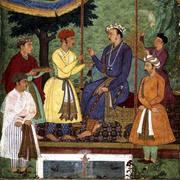



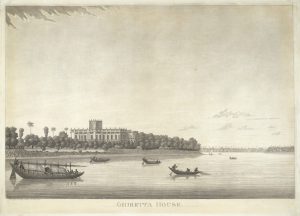

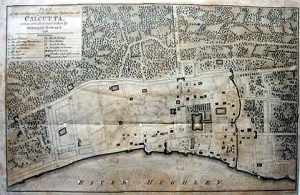





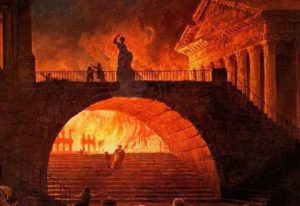
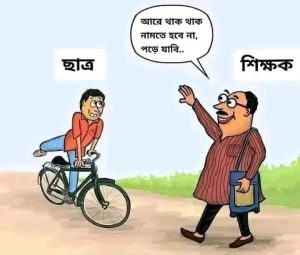







আমার স্বভাব খারাপ করে ছাড়লে দাদা। প্রতিদিন সকালে খুঁজে দেখি তোমার লেখা। এ এক অন্য ঘরনার ইতিহাসের পাঠ। এক নতুন দিগন্ত। সেলাম।
অনবদ্য উপস্থাপনা । অনেক অজানা তথ্য জানাল হলো – লেখককে অনেক ধন্যবাদ
অদ্ভুত ভালো লেখা। কত কি যে জানলাম আর অবাক হলাম! অসংখ্য ধন্যবাদ তোমাকে, জয়ন্তদা, এমন লেখা আমাদের উপহার দেওয়ার জন্য।
Excellent sir
I am surprised how Dr Jayanta wrote such a piece full of unknown information. I don’t know how to thank him.
খুব ভাল লাগলো।
বাকরুদ্ধ হয়ে যাচ্ছি ডঃ জয়ন্ত ভট্টাচার্যের লেখা পড়তে পড়তে। এ যেন কেঁচো খুঁজতে সাপ বেড়ুনো। আপনার অনুসন্ধানের মূল অভিমুখ ছিল (আমার বোধমত) প্রাক ব্রিটিশরাজ ভারতে ইউরোপীয় চিকিৎসার অনুপ্রবেশ, তার সাফল্য বা অসাফল্য এবং বিস্তার। আপনার তথ্যানুসন্ধানের ফলে তৎকালীন ইতিহাস ও সমাজচিত্রের একটি স্পষ্ট ধারণা আমরা পেয়ে যাচ্ছি মায় ১৭৩৭ এর ১১ই অক্টোবরের ভয়ানক প্রাকৃতিক দুর্যোগের তথ্য ও দাস ব্যবসার ভয়ঙ্কর রূপ।
ধন্যবাদ গবেষককে।